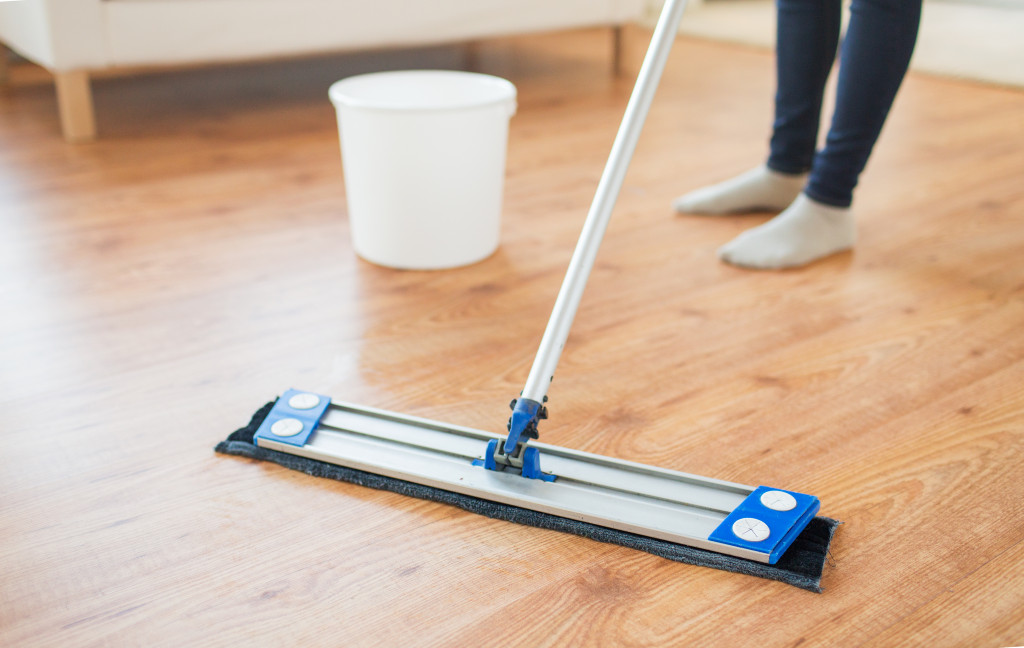No one likes dealing with a wet, messy house. Water and mud tracking can make a huge mess, and it’s never fun to deal with the cleanup. Luckily, you can do some easy things to keep your home dry and clean. By following these simple tips, you’ll be able to enjoy a clean and dry home all year long.
Start at the Source
One of the best ways to keep your home clean and dry is to prevent water and mud from tracking in in the first place. You can do this by placing rugs at your home’s entrances. Doing this will help catch any water or mud before it has a chance to make its way into your home. Be sure to choose those that are durable and easy to clean; you’ll be glad you did when it comes time to wash them.
Aside from this, it is also essential to repair any damage. Preventing water damage is key to keeping your house dry. To do this, you should:
- Check your gutters and downspouts regularly to ensure they’re not clogged with debris. Clogged gutters can lead to water buildup and eventually leaks in your roof.
- Inspect your roof periodically for any missing or damaged shingles. These need to be fixed as soon as possible to prevent water from seeping through.
- Ensure that all the caulking and weatherstripping around your doors and windows are in good condition. Drafts can let moisture in, leading to mold and mildew growth.
- If you have any leaks, no matter how small, get them fixed immediately. Leaks can worsen over time and cause major damage.
Use Doormats and Boot Trays
Another great way to keep your home clean and dry is to use doormats or boot trays at all your home entrances. Doormats are great for catching any water or mud tracked in, while boot trays provide a convenient place for people to store their wet or muddy shoes. A water-absorbent floor mat is an excellent way to keep your floors clean, dry, and protected from wear and tear, making them ideal for high-traffic areas.
These are made from microfiber or highly-absorbent materials that can quickly soak up water and prevent it from damaging your floors. Not only do they protect your floors, but these mats are also affordable and versatile enough to be used in various settings.
On the other hand, a boot tray is a convenient place for people to store their wet or muddy shoes, which can help prevent water and mud from tracking in. Boot trays are typically made of plastic or metal and have a raised edge to contain water and mud. They come in various sizes to fit nearly any space and are easy to clean. Wipe them down with a damp cloth when they get dirty.
Take Your Shoes Off
When you’re inside your home, take your shoes off before walking on your flooring—especially if you’ve been outside in the rain or snow. Walking around in wet or muddy shoes is a surefire way to track water and dirt into your home, so avoid it if possible. If you don’t want to take your shoes off every time you come inside, consider investing in a pair of indoor slippers or house shoes that you can slip on when you get home.
When you take your shoes off before entering the house, you’re doing more than just keeping your floors clean. You’re also protecting your home from water damage. Wet shoes can cause water to seep into your flooring, leading to mold and mildew growth.
By taking your shoes off, you’re preventing this from happening. Additionally, wet shoes can also damage your flooring over time. Be sure to take your shoes off before entering the house, especially when they’re muddy and wet. It’s easy to prevent water damage and keep your home looking its best.
Also, taking your shoes off can help keep your feet clean and healthy. Shoes often collect bacteria and other contaminants, so removing them can help reduce your risk of getting sick. Finally, removing your shoes can help you relax and feel more comfortable in your home. Shoes are often dusty and dirty, so taking them off can help create a cleaner and more relaxing environment.

Wipe Your Feet
In addition to taking your shoes off, be sure to wipe your feet before entering. This will help remove any water or mud clinging to your shoes—and keep it from being tracked onto your floors. A quick wipe with a towel is usually all it takes; be sure to do it before contacting any flooring surface.
Since rain and snow often equal more dirt, it’s also best to wash your feet regularly. This helps get rid of any potential bacteria or contaminants hanging around. Plus, it can be pretty relaxing after a long day.
Hang Up Your Coat
If you come inside and find that your coat is wet, don’t just toss it onto a chair or couch—hang it up! Allowing wet coats to sit on furniture can lead to stains and damage, so it’s best to hang them up as soon as possible. If you don’t have a place to hang coats near your entryway, consider investing in a coat rack or hooks that you can use for this purpose.
Hanging up your coat prevents water from seeping into your furniture. It reduces the following amount of dirt and dust tracked into your home. Finally, it keeps your coat clean and free of wrinkles.
Now, You’re Prepared!
Following these simple tips can help keep your home spotless all year long—no matter what Mother Nature throws your way. So next time a storm brewing outside, you can relax knowing you’re prepared!




